Human Dimensions of Water Quality Research
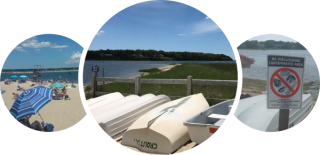
- Recreation in Coastal Waters
- Coastal Nutrient Pollution
- Property Values and Water Quality
- Source Water Protection
- Public Engagement with the Science of Water Resources
- Harmful Algal Blooms
Water is one of our most precious resources. We depend upon it for our livelihoods, healthy ecosystems and people, and a robust economy. To better protect this important resource, EPA scientists are conducting research on how people use and value clean water. This research includes a suite of approaches and studies that capture different aspects of the human dimensions of water quality. These address research questions focused on humans’ behaviors, knowledge, perceptions, and social and economic values related to water quality.
Research Publications
-
Riding the social science wave to study human dimensions of coastal water quality in New England (2023)
Recreation in Coastal Waters
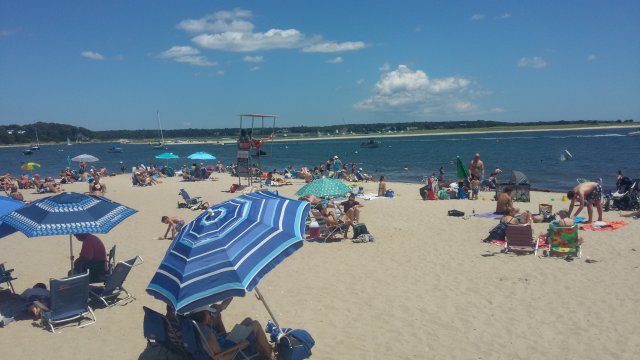
Perceptions of water quality influence people’s recreational experiences and choices. Understanding these perceptions helps EPA connect environmental measures with what people care about most. Water quality can enhance or adversely affect recreation, and in some cases, can impact human health. However, little is known about the economic value of recreation in coastal areas, especially in estuaries.
EPA scientists are conducting research to estimate the value of coastal recreation in New England using literature reviews, surveys and modeling. This research is providing practical and transferable methods to quantify the social and economic value of changes in water quality for recreation, including understanding how many people use coastal areas for recreation and the value people place on coastal recreation and protecting or improving water quality.
Research Publications
- The value of water quality for coastal recreation in New England, USA (2024)
- Coastal Recreation in Southern New England: Results from a Regional Survey (2022)
- Evaluating Water Quality Impacts on Visitation to Coastal Recreation Areas Using Data Derived from Cell Phone Locations (2022)
- Geographies of Dirty Water: Landscape-Scale Inequalities in Coastal Access in Rhode Island (2022)
- How to Quantify Coastal Recreation in an Estuary: Methods for Estimating the Number of Participants and Value of Recreation for Coastal Access Points (2020)
- Using Data Derived from Cellular Phone Locations to Estimate Visitation to Natural Areas: An Application to Water Recreation in New England, USA (2020)
- Sense of Place and Water Quality: Applying Sense of Place Metrics to Better Understand Community Impacts of Changes in Water Quality (2020)
- Quantifying Recreational Use of an Estuary: A Case Study of Three Bays, Cape Cod, USA (2019)
- Valuing Coastal Beaches and Closures Using Benefit Transfer: An Application to Barnstable, Massachusetts (2018)
- The Application and Usefulness of Economic Analyses for Water Quality Management in Coastal Areas (2017)
- Economic Tools for Managing Nitrogen in Coastal Watersheds (2016)
Additional Research Resources
- Recreation in coastal waters research code packages and datasets
- Helping coastal communities address beach closures (EPA Science Matters article)
- EPA scientists develop method for estimating recreational visitors and value of Cape Cod estuaries (EPA Science Matters article)
Related Information
Coastal Nutrient Pollution
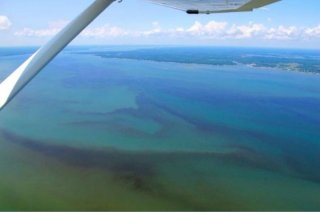
Although nutrients (nitrogen and phosphorus) are a natural part of aquatic ecosystems, excess amounts can cause water systems to become polluted. Nutrient pollution is among the most prevalent causes of water quality impairment in the United States and can adversely affect environmental and human health and the economy. Nonpoint sources of coastal nutrient pollution—excess nutrients that end up in coastal waters from multiple different natural and human-made sources—can be addressed using a wide variety of nutrient reduction approaches. However, understanding when and where to use a type of approach is a challenge for local decision makers tasked with reducing nutrient pollution. Some approaches have been more thoroughly tested, while others may be less expensive to implement but not as thoroughly tested.
EPA scientists are investigating several of the leading approaches being considered for nutrient pollution reduction in coastal areas, and the impacts of selecting and implementing different technologies on communities. Scientists at EPA are also investigating what factors drive household-level willingness to implement, and their experience with, novel approaches to nutrient management using focus groups and interviews. These studies will provide information that can inform difficult choices among technologies for local decision makers.
Research Publications
- Factors in homeowners’ willingness to adopt nitrogen-reducing innovative/alternative septic systems (2023)
- Considerations for using alternative technologies in nutrient management on Cape Cod: Beyond cost and performance (2023)
- A dynamic modeling approach to estimate nitrogen loading in coastal bays on Cape Cod, Massachusetts, USA (2022)
- EPA scientists and partners team up to tackle Cape Cod’s nutrient pollution and protect water quality (2022)
- When, Where, and How to Intervene? Tradeoffs Between Time and Costs in Coastal Nutrient Management (2021)
- A Resilience Framework for Chronic Exposures: Water Quality and Ecosystem Services in Coastal Social-Ecological Systems (2018)
Related Information
Property Values and Water Quality
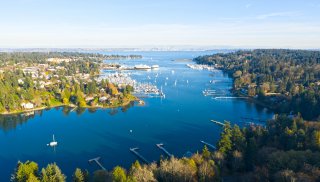
Real estate markets are an ideal setting for researchers to observe and quantify people’s preferences and values for the environment and water quality. For example, home buyers might be attracted to open space and other environmental amenities but will try to avoid homes near polluted or contaminated sites.
Using data from select markets across the country, EPA researchers are investigating how water quality affects home values. This research explores whether water quality affects property values differently across regions of the U.S. and across types of waterbodies. It also provides information that can be used to support benefit analyses of public and environmental policies.
Research Publications
- Using benefit transfer to estimate housing value increases from improved water clarity: A case study of lakes in Kosciusko County, Indiana (2024)
- Hedonic property values and water quality: A meta-analysis of commodity, market, and methodological choices (2024)
- Valuing water quality in the United States using a national dataset on property values (2023)
- Property Values, Water Quality, and Benefit Transfer: A Nationwide Meta-Analysis (2022)
- Do Housing Prices Reflect Water Quality Impairments? Evidence from the Puget Sound (2019)
Additional Resources
- Property values and water quality: A nationwide meta-analysis and the implications for benefit transfer (2019 presentation)
Source Water Protection

Drinking water treatment plants often face declines in source water quality due to long-term changes in watershed conditions, such as increased agriculture runoff or wildfire frequency. These changes may occasionally result in temporary plant shutdowns and drinking water advisories that can significantly affect day-to-day human social and economic activities. In response, treatment plants may modify or augment existing treatment processes, but this could lead to higher water rates for consumers. Therefore, reduced source water quality can lead to a decrease in consumer welfare and an increase in treatment costs.
Drinking water treatment plants can take actions to protect source water from contamination before reaching their plants’ intake, including land acquisition, incentives for best management practices, and public education. Understanding the costs and benefits of protecting source waters versus augmenting treatment can help water managers select the most cost-effective ways to protect human health while minimizing water costs for consumers.
EPA scientists are conducting research to evaluate how changes in source water quality affect drinking water treatment costs and whether source water protection is a cost-effective solution.
Research Publications
- Linking Water Quality to Drinking Water Treatment Costs Using Time Series Analysis: Examining the Effect of a Treatment Plant Upgrade in Ohio (2022)
- The Effects of Agricultural and Urban Land Use on Drinking Water Treatment and Costs: An Analysis of United States Community Water Systems (2020)
- The Effects of Source Water Quality on Drinking Water Treatment Costs: A Review and Synthesis of Empirical Literature (2018)
- Economic Support for Decisions on Source Water Protection (2018)
Related Information
Public Engagement with the Science of Water Resources
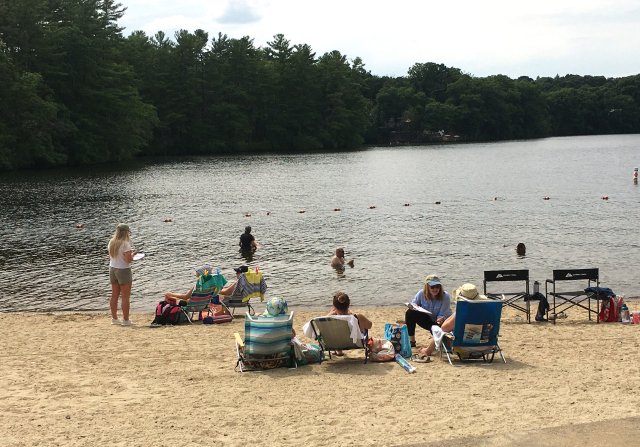
People can engage in science in a range of ways related to water quality and recreation. This can range from building literacy regarding environmental challenges, to collaboration with scientists in defining challenges and conducting experiments, to sharing experiential knowledge in both research and planning decisions. People engaged in science on water quality can help improve local preparedness for environmental challenges and improve equitable decision-making. Researchers studying public engagement with science can address needs like identifying key environmental communication challenges and barriers, determining best approaches to communicate risks and hazards, and applying how to most effectively engage varied audiences in scientific research to address environmental challenges.
EPA researchers have conducted research on public engagement with water resources largely related to nutrient challenges, using interview and content review methods. This work has focused on capturing the perspectives of EPA researchers, key stakeholders, and recreators at various waterbodies to understand their experiences with solutions-driven research processes and their concerns with specific waterbody changes. Additional work has included developing plans and reports to ensure strategic communication with stakeholders throughout a solutions-driven project. This applied research aims to inform public engagement efforts at the state and town-level to more accurately meet community needs, and will inform future solutions-driven research projects at EPA.
Research Publications
- Lessons learned and recommendations in conducting solutions-driven environmental and public health research (2024)
- Using science communication research to practice iterative engagement in collaborative nutrient management (2024)
- Messaging and forecasting hypoxia for Long Island Sound (2023)
- Using Researcher and Stakeholder Perspectives to Develop Promising Practices to Improve Stakeholder Engagement in the Solutions-Driven Research Process (2022)
- Messaging on Slow Impacts: Applying Lessons Learned from Climate Change Communication to Catalyze and Improve Marine Nutrient Communication (2021)
- Communication Planning in Solutions-Driven Research (2021)
- Designing Solutions for Clean Water on Cape Cod: Engaging Communities to Improve Decision Making (2020)
- Best Practices in Great Lakes Climate Communication (2021)
Additional Resources
- Technical Brief: How Shellfish Can Help Improve Water Quality (2021)
- Technical Brief: How Can Climate Change Communication Research Improve Communication About Nutrient Pollution? (2021)
- X Thread: Bog Nutrient Reduction (2020) | This X thread shares a collaborative video on our transdisciplinary project engaging stakeholders in a nutrient management experiment on a cranberry bog.
Harmful Algal Blooms
Harmful algal blooms (HABs) are a rising concern to many communities throughout the United States. They have a slate of impacts on the environment and human, pet, and domestic animal health effect. Managing for and communicating these impacts is challenging for water managers as there is low public awareness about potential threats from HABs. EPA researchers conducted work to better understand management needs and concerns of water managers and researchers. This work used semi-structured interviews to gather insights from the managers and researchers about needs related to the prevention, forecasting, monitoring, treatment, and communication of HABs.
Research Publications
Additional Resources
Marsh Migration
As sea levels rise, coastal marshes are being lost as they become inundated with sea water and drown. The rising seas also create new potential areas for marshes to migrate, “marsh pathways,” which are often in use by communities for a slate of other purposes. This work uses spatial analysis to investigate human dimensions of marsh migration: overlap with coastal contamination and parcel prioritization.
Research Publications
The publications linked below highlight case studies focusing on lessons learned from the projects for engagement and partnerships.
- Hazardous and contaminated sites within salt marsh migration corridors in Rhode Island, USA (2023)
This study aggregates various hazardous and contaminated site data for Rhode Island and applies marsh migration modeling to identify potential areas of overlap. These areas provide opportunities for collaborative planning that incorporates cleanup considerations with potential marsh restoration efforts. - This land is your land, this could be marsh land: Property parcel characteristics of marsh migration corridors in Rhode Island, USA (2024)
This study looks at parcel-level data for marsh migration pathways to identify potential areas that are the lowest in cost and effort. - Open SESAME: A social-ecological systems framework for collaborative adaptive management and engagement in coastal restoration and climate adaptation (2022)
This study is a case study of two different marsh restoration projects in New England.
